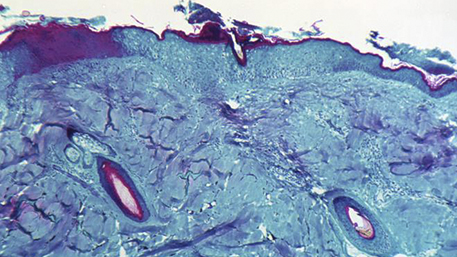
07/11/2022
Hot Topics of the Day are picked by experts to capture the latest information and publications on public health genomics and precision health for various diseases and health topics. Sources include published scientific literature, reviews, blogs and popular press articles.
Sign up MyPHGKB to receive the daily hot topic email alert.
Archived Hot Topics of the Day By Date
Comprehensive Genomic Sequencing–Based Screening for Hearing Loss in the Neonatal Intensive Care Setting—Is It Time?
AN Abou Tayoun, JAMA Network Open, July 11, 2022
Association Between Expanded Genomic Sequencing Combined With Hearing Screening and Detection of Hearing Loss Among Newborns in a Neonatal Intensive Care Unit
Y Zhu et al, JAMA Network Open, July 11, 2022
Poziotinib for EGFR exon 20-mutant NSCLC: Clinical efficacy, resistance mechanisms, and impact of insertion location on drug sensitivity
YY Elamin et al, Cell, July 11, 2022
BA.5, Chapter 2 Significant updates from the previous BA.5 story
E Topol, Ground Truths Blog, July 10, 2022
SARS-CoV-2 Omicron BA.5: Evolving tropism and evasion of potent humoral responses and resistance to clinical immunotherapeutics relative to viral variants of concern.
A Aggarwal et al, MEDRXIV, July 10, 2022
Assessing the impact of SARS-CoV-2 lineages and mutations on patient survival
C Loucera et al, MEDRXIV, July 10, 2022
Modeling the impact of the Omicron infection wave in Germany
BF Maier et al, MEDRXIV, July 10, 2022
Monkeypox genomic surveillance will challenge lessons learned from SARS-CoV-2.
Pfaff Florian et al. Lancet (London, England) 2022 7 (10345) 22-23
Disclaimer: Articles listed in Hot Topics of the Day are selected by Public Health Genomics Branch to provide current awareness of the scientific literature and news. Inclusion in the update does not necessarily represent the views of the Centers for Disease Control and Prevention nor does it imply endorsement of the article's methods or findings. CDC and DHHS assume no responsibility for the factual accuracy of the items presented. The selection, omission, or content of items does not imply any endorsement or other position taken by CDC or DHHS. Opinion, findings and conclusions expressed by the original authors of items included in the Clips, or persons quoted therein, are strictly their own and are in no way meant to represent the opinion or views of CDC or DHHS. References to publications, news sources, and non-CDC Websites are provided solely for informational purposes and do not imply endorsement by CDC or DHHS.
- Page last reviewed:Feb 1, 2024
- Page last updated:Apr 19, 2024
- Content source:






